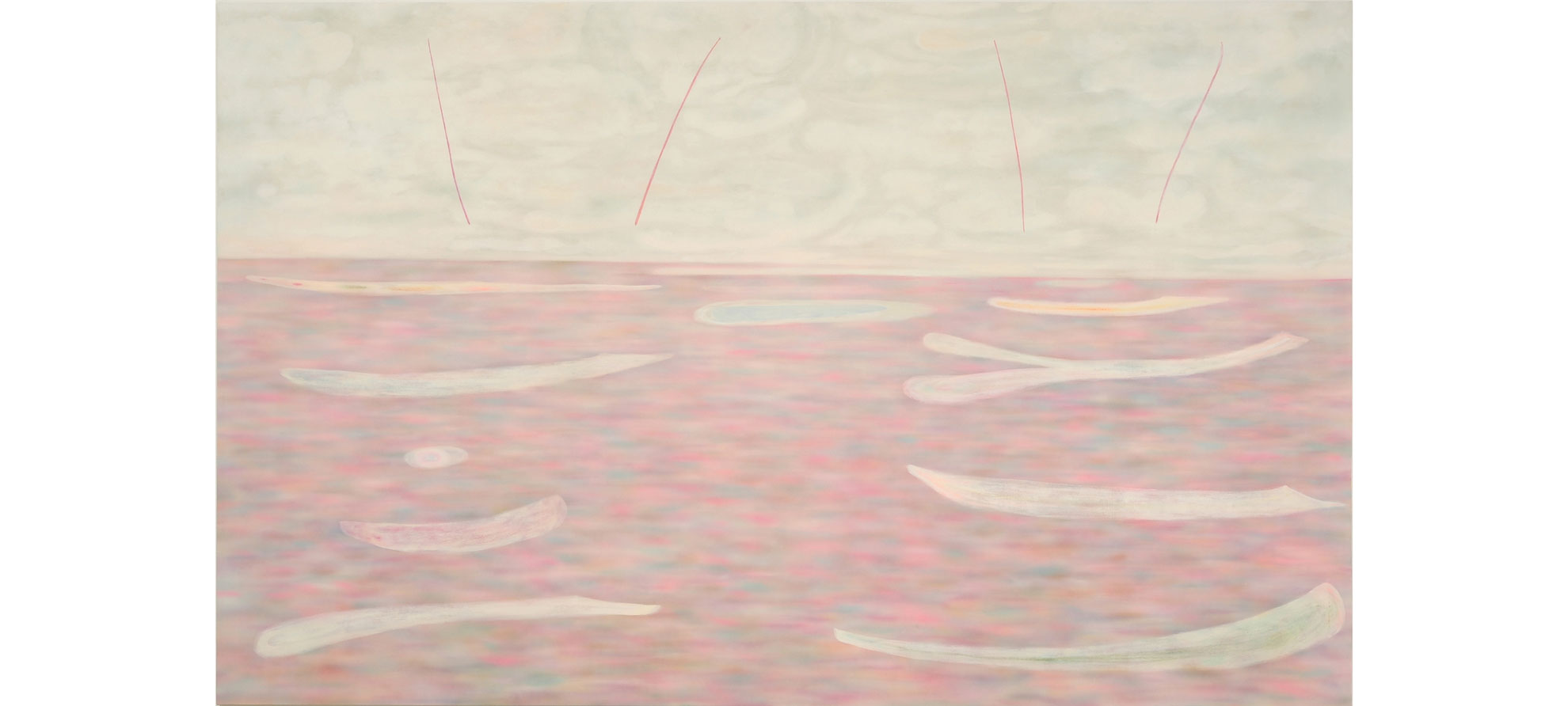FOCUS: Hiroshi Sugito

Hiroshi Sugito
Pink Water, 2005
Acrylic and conte color on canvas
103 x 166 inches
Image copyright: Photo courtesy of Marc Foxx, Los Angeles. Photograph by Robert Wedemeyer.
Like many contemporary Japanese painters, Hiroshi Sugito (born in 1970) was trained in the traditional Japanese painting style known as Nihonga (Nihon means “Japan” and ga means “painting”). The Nihonga technique utilizes ground pigments made of natural materials such as minerals, shells, and coral applied to handmade paper. Sugito achieves a visual similarity to this technique in his paintings by using layers of acrylic paint. In his works he also refers to the formal spatial arrangements of Nihonga, and he further refers to Japanese tradition by depicting nature, however, his depictions are far from natural. Sugito’s environments delve into the fantastic and surreal, including vast landscapes with elements of interiors and stages with ocean floors and expansive skies. This surrealism is often emphasized by tugboats, spaceships, or rockets that are so small, they are virtually undetectable in reproduction.
The paintings making their debut in this exhibition were still in progress at the time of this release. The artist, in the stage of making preliminary notes and sketches, explains, “I want to place a forest in a room, with a chair and butterflies framed in a window.” As he is doing for this show, Sugito often works on several canvases at once, each one building on the last. A type of narrative evolves in his work, combining what seem like childhood memories with science fiction and fantasy.
Sugito’s imagery is connected to an important facet of contemporary Japanese art. He is a younger member of a group of Japanese artists who emerged in the early 1990s as a bridge between fine art and pop culture. The most influential of these artists are Takashi Murakami (born in 1963) and Yoshitomo Nara (born in 1959). Murakami, Nara, and others have claimed a fundamental relationship between traditional Japanese painting and contemporary Japanese animation, or anime, which commonly generalizes and westernizes its characters. Often depicting fantastical childhood or adolescent motifs in isolated situations, Murakami, Nara, and many others simultaneously refer to and influence the contemporary Japanese subculture known as kawaii (“cute”). The kawaii culture, characterized as “uncritical,” embraces such popular, generically rendered commercial figures as Hello Kitty, but it has also encroached on the realm of fine art. Nara, for instance, creates works on canvas that are exhibited in museums and galleries, but his imagery has been subsequently manufactured on t-shirts, ashtrays, notebooks, stuffed toys, and an array of other consumer goods.
Sugito’s imagery contributes to this contemporary Japanese aesthetic, including elements of kawaii. Yet while artists such as Murakami and Nara have explored an extreme version of “cute” that borders on being alarming, sexual, and dangerous, Sugito uses “cute” as a springboard to create pictures that subtly oscillate between strange and beautiful, familiar and estranged. His delicate works at once convey a sense of delightful reverie and eerie displacement. Describing his process, Sugito has said, “I start moving my brush like walking into the woods, away from everything, and I want words and meanings to lose their power and just fade away.” His paintings seem to achieve his desire to make certain familiar elements disappear, while at the same time, new and unknown territories emerge.
Hiroshi Sugito
Pink Water, 2005
Acrylic and conte color on canvas
103 x 166 inches
Image copyright: Photo courtesy of Marc Foxx, Los Angeles. Photograph by Robert Wedemeyer.
